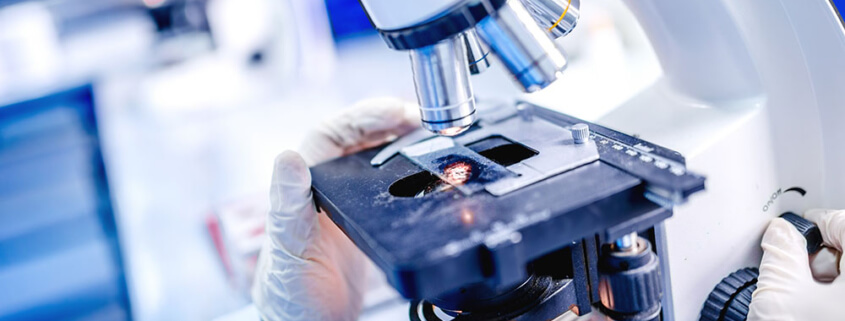INTRODUCTION:
Lateral flow immunoassays (LFIAs) are an important component in point-of-care patient diagnostics. More LFIAs are being developed every year, driven by the need of rapid, low-cost information in a patient or hospital setting. Presented in this note will be the overall advantages and disadvantages to LFIAs, as well as new research to improve the lateral flow assay (LFA) technology.
DISCUSSION:
LFAs can be classified into two types of basic assays. One is nucleic acid lateral flow assay (NALFA) and the other is the lateral flow immunoassay (LFIA). The LFIA has several components which need to be carefully assembled and tested in assay development. All of these are described in detail by Koczula and Gallotta1Koczula, K.M., and Andrea Gallota. 2016. Lateral Flow assays. Essays in Biochemistry. 60, 111-120., and include 1) the antibody, which needs to be carefully designed and highly purified, 2) the nanoparticle label, which needs to be stable, easily reproducible, efficient, commercially available and easy to scale up the conjugation procedure, 3) the LFIA membrane strip, which is most often nitrocellulose, but which must have a uniform pore size and good binding characteristics to the proteins in the assay, 4) the sample pad which has the buffer salts proteins, surfactants and other liquids to control the flow rate across the strip, 5) the conjugate pad, of which the main role is to hold the detector particles and keep them stable, and 6) the absorbent pad for wicking the fluid through the membrane and to collect the processed liquid. One of the most important benefits of an LFIA is that it is usually a one-step assay which requires no special skills or instrumentation to achieve the result(s). The fact that these types of assays are qualitative, yes/no, leads to its simple determination. These tests can be done at the point-of-care, or even in the patient’s home (the self-pregnancy test which detects the hCG hormone is probably the most widely known LFA on the market). In the case of LFIAs for pathogens, the assay targets can be pathogen specific proteins, antibodies, or nucleic acids. These assays usually have a long shelf life and do not require refrigeration or freezer storage of the assay reagents. Finally, the samples do not normally need to be pre-treated before applying to the LFIA. However, there are several draw-backs with the LFIA technology. Applying the wrong amount of sample onto the LFIA can test strip can alter the reliability of the test results. Antibody preparation is a critical step for the LFIA. Sometimes the nature of the sample can alter the assay results, or the time needed for the assay to “develop”. The nature of the sample can also alter the capillary action, or spread, of the target molecule on the test strip. In cases, such as this, pre-treatment of the sample may be needed. And finally, although the nature of the LFIA leads to low costs for the end user, there can be very large development costs in the design/development of the assays by the manufacturer.
CONCLUSION:
Lateral flow assays, or more specifically, LFIAs have a wide range of application for detecting biological pathogens in a clinical and non-clinical setting. What the LFIA assays lack in sensitivity is made up for by its low cost, rapid results and simplicity of use. Although most LFIAs (or LFAs) are monospecific, more assays are being developed in a multiplex format for detecting more than one target from a specific pathogen, or for detecting more than one pathogen. New strategies are being devised to increase the sensitivity by enhancing the signal using colloidal gold nanoparticles, or using gold nanoparticles in combination with horseradish peroxidase, which results in an amplification of the signal2Parolo, C., de la Escosura-Muniz, A. and Merkoci, A. 2013. Enhanced lateral flow immunoassay using gold nanoparticles loaded with enzymes. Biosens. Bioelectron. 40, 412-416.. A combination of detecting both antigens and antibodies by using two conjugate pads for the simultaneous detection of two proteins has also been described3Zhu, J., Zou, N., Mao, H., Wang, P., Zhu, D., Ji, H. et al., 2013. Evaluation of a modified lateral flow immunoassay for detection of high-sensitivity cardiac troponin I and myoglobin. Biosens. Bioelectron. 42, 522-525..



